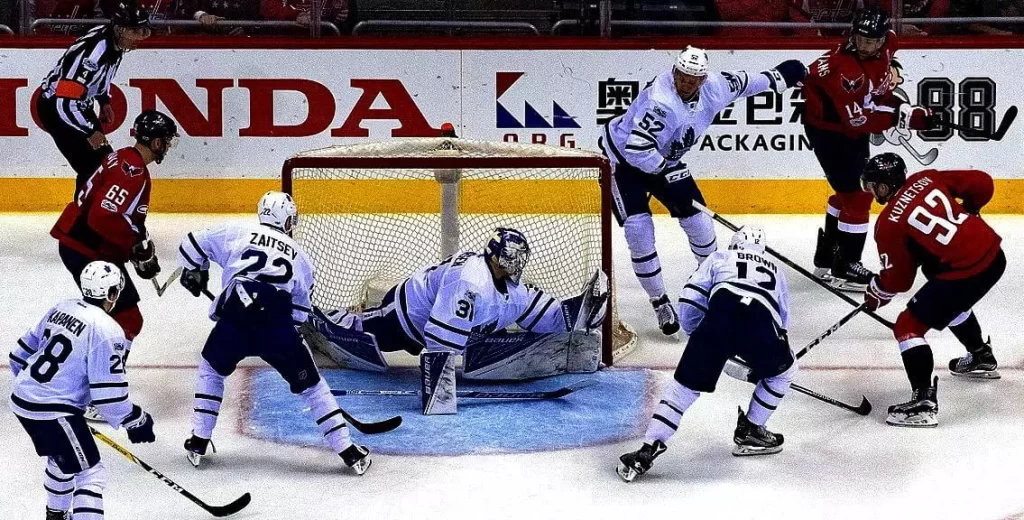If you’re new to the sport or just curious about where all the fast-paced action happens, understanding the ice hockey size is a great place to start. Whether you’re watching the NHL or the Winter Olympics, the dimensions of the rink can significantly influence gameplay.

Content
Rink Dimensions: A Comparison
An ice hockey rinks may look the same to the casual eye, but there are subtle—and important—differences depending on where the game is being played. The two most common types of rinks are the regulation size ice hockey rink (used in North America) and the Olympic ice hockey rink size.
- Regulation size ice hockey rink: 200 feet long and 85 feet wide
- Size of Olympic ice hockey rink: 200 feet long and 100 feet wide
The primary difference lies in the width. The Olympic ice hockey rink size is 15 feet wider, giving players more room to maneuver, which can result in a different style of play.
Impact on Gameplay
The size of Olympic ice hockey rink alters more than just measurements—it changes strategy. The wider rink promotes a more open, less physical game, emphasizing speed and puck control. In contrast, the narrower regulation size ice hockey rink used in the NHL encourages tight checking, faster transitions, and more shots on goal.
Zones and Markings
Despite their size differences, both rink types share a common layout in terms of zones and markings:
- Defensive zone: Closest to a team’s goal
- Neutral zone: Center ice area
- Offensive zone: Where goals are scored
Faceoff circles, goal creases, and blue lines are placed similarly to ensure consistency across levels of play. However, the extra width in the Olympic ice hockey rink size spreads these zones further apart.
Rink Size by League
Various leagues around the world use different rink standards:
- NHL (National Hockey League): Uses the regulation size hockey rink
- IIHF (International Ice Hockey Federation): Uses the Olympic ice hockey rink size
- College hockey: May use either, depending on the venue
Players transitioning between leagues often need to adjust their gameplay due to the change in rink size.
How Rink Size Affects Fans
It’s not just the players who notice the difference. The viewing experience can change too. A regulation size hockey rink offers closer action for fans, while the Olympic ice hockey rink size may appear more spacious, potentially reducing the intensity of the viewing experience for those used to the NHL style.
Ice Surface and Maintenance

A larger rink requires more ice maintenance. The size of Olympic hockey rink demands more coolant, longer resurfacing times with the Zamboni, and slightly higher maintenance costs. Arena operators consider these factors when choosing which standard to adopt.
Why the Size Difference Exists
The difference in rink sizes dates back to tradition and geography. North America, with its emphasis on physical play and limited space in older arenas, adopted the narrower regulation size ice hockey rinks. European rinks, benefiting from more space and different playstyles, leaned toward the Olympic ice hockey rink size.
Youth and Amateur Rinks
In youth and amateur leagues, rinks may vary even more. Some follow the regulation size ice hockey rink closely, while others modify dimensions for cost or space constraints. However, consistency is key for player development, and many organizations now aim to adhere to standardized dimensions.
Olympic vs NHL: What’s Better?
There’s ongoing debate about which rink size is better. Purists argue that the Olympic ice hockey rink size allows for more creative and fluid gameplay. On the other hand, supporters of the regulation size hockey rink love the gritty, fast-paced nature it promotes. Ultimately, it depends on preference, and many fans enjoy both styles for different reasons.
Rink Design and Safety
Rink size can also influence player safety. With more space, the Olympic ice hockey rink size can reduce high-impact collisions, potentially lowering injury risks. The regulation size hockey rink, while more intense, has seen safety improvements through better boards and padding.
Planning a Visit to a Rink

If you’re planning to watch a game or take to the ice yourself, it’s helpful to know what to expect. Check the venue’s specifications—whether it follows the Olympic hockey rink size or regulation size ice hockey rink—to better understand the action and surroundings.
Conclusion: Know Your Rink
Whether you’re an aspiring player, a dedicated fan, or just someone curious about the game, understanding ice hockey rink size is fundamental. The difference between Olympic ice hockey rink size and regulation size hockey rink goes beyond numbers—it’s about culture, strategy, and the very style of hockey played.
By learning these distinctions, you’re not only becoming a more informed viewer, but you’re also gaining a deeper appreciation for the intricacies of the sport. So next time you watch a game, take a moment to notice how the size of Olympic ice hockey rink or its regulation counterpart shapes every move on the ice.
FAQs About Ice Hockey Rink Size
Q1: What is the standard NHL rink size?
The standard NHL rink size is 200 feet long by 85 feet wide, known as the regulation size ice hockey rink.
Q2: Why is the Olympic rink wider than the NHL rink?
The Olympic ice hockey rink size is wider to promote more open gameplay, aligning with international hockey’s emphasis on speed and finesse over physicality.

Emily Harris is your ticket to the sports world. From thrilling competitions to heartwarming sportsmanship, she’s got you covered with her extensive sports insight.

